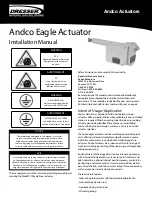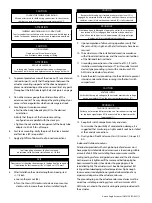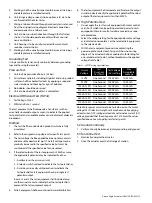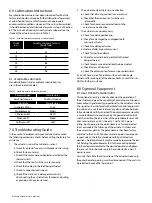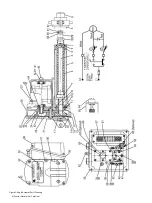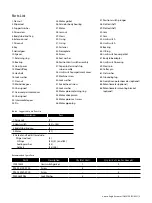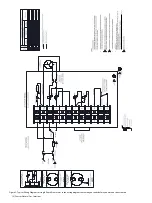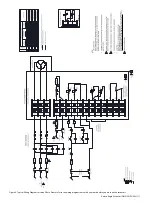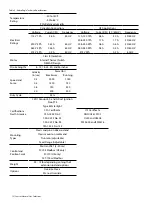
Andco Eagle Actuator IOM NGS.IPG.0031| 5
5. Markings shall be visually inspected to be sure all warnings
and data plates are installed correctly.
6. Unit ratings (voltage, speed, stroke, options, etc) are to be
confirmed with the Sales Order.
7. Wiring is to be confirmed through continuity tests refenced
from the assigned wiring diagram. Electrical connections
and components are to be secure.
8. Unit is to be run in both directions through the full rated
stroke. Unit should operate smoothly without unusual
noise or vibration.
9. Unit housing is to be visually inspected for mechanical
soundness and esthetics.
10. Markings shall be visually inspected to be sure all warnings
and data plates are installed correctly.
Grounding Test:
Using a continuity tester, verify continuity between grounding
lugs and housing (bare metal).
Pressure Test:
1. Unit shall be pressurized to 3psi (.02 bar)
2. All surfaces and joints, including all gasket and o-ring sealed
surfaces shall be checked for leaks by applying a soap and
water solution and checking for signs of bubbles.
3. No bubbles should be observed.
4. Unit is to be dried after leak test is completed.
Electrical Withstand Test (Hi-Pot):
1. Test Voltage: 1200V
2. Withstand time: 1 second
The test equipment shall incorporate a transformer with an
essentially sinusoidal output, a means to indicate the applied
test potential, and an audible and/or visual indicator of dielectric
breakdown.
Method:
1. The test shall be conducted on products which are fully
assembled.
2. Refer to the assigned wiring diagram for specific test points.
3. The test voltage shall be applied between primary circuits
and accessible dead-metal parts. The test voltage may be
gradually increased to the specified value but must be
maintained at the specified value for one second.
4. If the rated output of the test equipment is 500VA or more,
the applied test potential may be indicated by either:
1 - A voltmeter in the primary circuit;
2 - A selector switch marked to indicate the test potential; or
3 - A marking in a readily visible location to indicate the
test potential for test equipment having a single test
potential output.
In cases 2 and 3, the test equipment shall include a lamp
or other visual means to indicate that the test potential is
present at the test equipment output.
5. All test equipment shall be maintained in current calibration.
6. The test equipment shall incorporate a voltmeter in the output
circuit to indicate directly the applied test potential if the rated
output of the test equipment is less than 500VA.
5.1 High Potential Test
1. Do not apply this test to units equipped with motor control
cards. Tests which involve putting electrical power to units
equipped with motor control cards are covered by a sepa-
rate procedure.
2. Select the voltage setting for the appropriate motor voltage
as indicated on nameplate. Set the selected test equipment
to the selected volts.
3. With the test equipment ground wire contacting the
gear case plate, contact each test point shown on wiring
diagram. The actuator shall be capable of withstanding for
one second per test point, without breakdown, the applied
voltage from Table 1.
Circuit
Voltage
Test
Duration/
Test Point
Test Voltage
(AC) setting
Max
Acceptable
Leakage
12 VDC
One Second
1000 Volts
10.33 mA
24 VDC
One Second
1000 Volts
10.33 mA
120 VAC 1PH One Second
1200 Volts
10.33 mA
220 VAC 1PH One Second
1200 Volts
10.33 mA
220 VAC 3PH One Second
1200 Volts
10.33 mA
460 VAC 3PH One Second
1200 Volts
10.33 mA
575 VAC 3PH One Second
1200 Volts
10.33 mA
Note: Motor power circuits are to be tested based on the motor
voltage (AC). Dielectric strength tests may be made by applying
a direct current (DC) voltage instead of an alternative current (AC)
voltage, provided that the voltage used is 1.414 times the values
specified above. See wiring diagram for test points.
5.2 Ground Continuity
1. Verify continuity between actuator ground lug and ground.
5.3 Functional Test
1. Electrically energize the actuator.
2. Drive the actuator over the full range of motion.
Table 1 - HIPOT Testing Specifications

